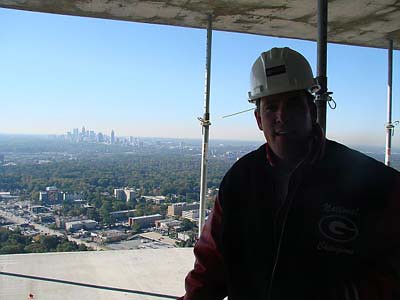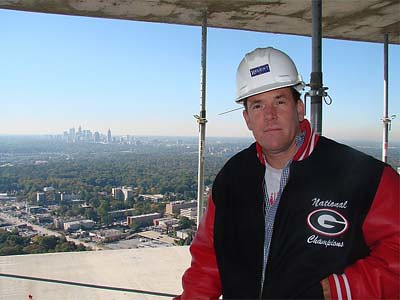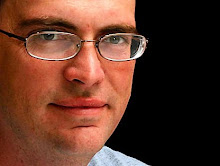My wife has just gotten into digital scrapbooking, and while researching software to use we found a free package called Picaboo. It has really intrigued me. Picaboo is more than just a program, it's also a publishing service.
Here's how it works. You can download the Picaboo software for free, design your photo books and cards, and then upload them to the Picaboo servive for printing and delivery.
I have downloaded the software for a try out. The software is easy to use, and I'm in the midst of creating a photo book of my kid's experience on the swim team last summer. When I am done, I will get it printed from the Picaboo service. Then I will let you know how the book turned out, what I thought of the software, and my overall opinion.
If you don't want to wait, you can check out the software for yourself at www.picaboo.com.
Thursday, November 1, 2007
Tuesday, October 30, 2007
Photo Tip: Using a fill flash
One of my friends got a thrill of a lifetime today -- he got to walk on a tower crane 54 stories up!
Next to our building in the Buckhead area of Atlanta is a 50-story skyscraper in the midst of construction. The HowStuffWorks team was invited to go to the top of the building and video tape some of the construction and views as they laid the 50th floor with cement.
On the way to the top, they stopped to get a photo with a backdrop of downtown Atlanta. The first photo didn't turn out so well because it was bright in the background, but not so bright in the foreground.

Because of the bright background, the camera was fooled into thinking it didn't need to use the flash. For the second shot, the flash was used to fill in the dark foreground.

Much better! Even though it was plenty bright to see on the open floor of the skyscraper, there was too much difference in light between the background and the foreground to get a good exposure for both.
In photography, we call the measurements of light 'stops'. If the foreground was half as dark as the background, then that is one stop. In this case, the background was more than four times brighter than the foreground.
How do I know? Because the vast majority of digital cameras can't capture more than four stops of light in the same exposure. That is why the foreground was too dark when the background was properly exposed. By using the flash, we evened out the differences between the foreground and background.
Thanks, Scott, for letting me use your photos!
Next to our building in the Buckhead area of Atlanta is a 50-story skyscraper in the midst of construction. The HowStuffWorks team was invited to go to the top of the building and video tape some of the construction and views as they laid the 50th floor with cement.
On the way to the top, they stopped to get a photo with a backdrop of downtown Atlanta. The first photo didn't turn out so well because it was bright in the background, but not so bright in the foreground.

Because of the bright background, the camera was fooled into thinking it didn't need to use the flash. For the second shot, the flash was used to fill in the dark foreground.

Much better! Even though it was plenty bright to see on the open floor of the skyscraper, there was too much difference in light between the background and the foreground to get a good exposure for both.
In photography, we call the measurements of light 'stops'. If the foreground was half as dark as the background, then that is one stop. In this case, the background was more than four times brighter than the foreground.
How do I know? Because the vast majority of digital cameras can't capture more than four stops of light in the same exposure. That is why the foreground was too dark when the background was properly exposed. By using the flash, we evened out the differences between the foreground and background.
Thanks, Scott, for letting me use your photos!
Subscribe to:
Comments (Atom)




